
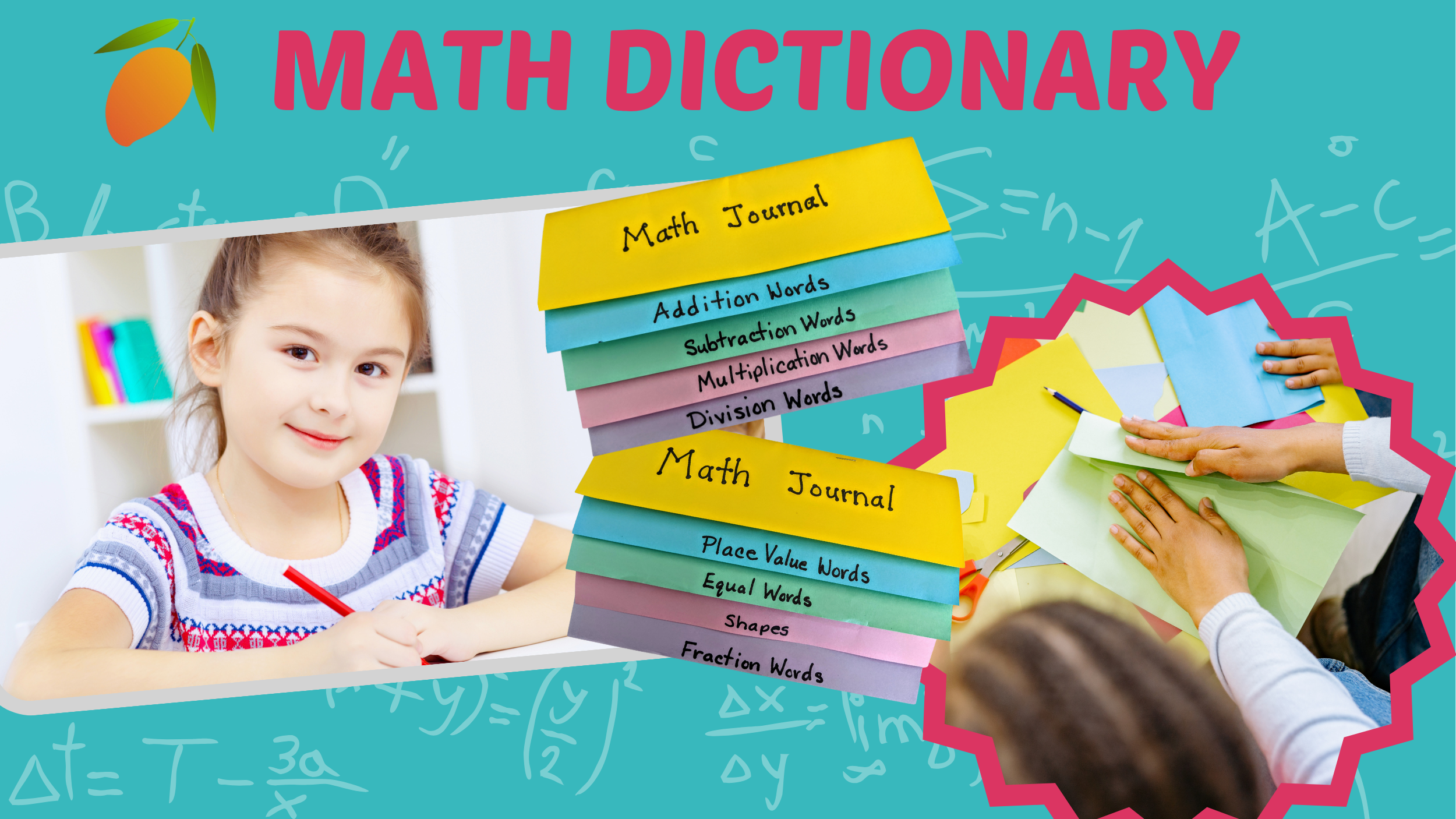
Creating a math dictionary with your students might just be one of the best things you can do to set them up for math success. It's personal and packed with vocabulary they’ll actually use and it’s totally student-made!
Math words can be tricky, especially for young learners. A self-made math dictionary helps kids:
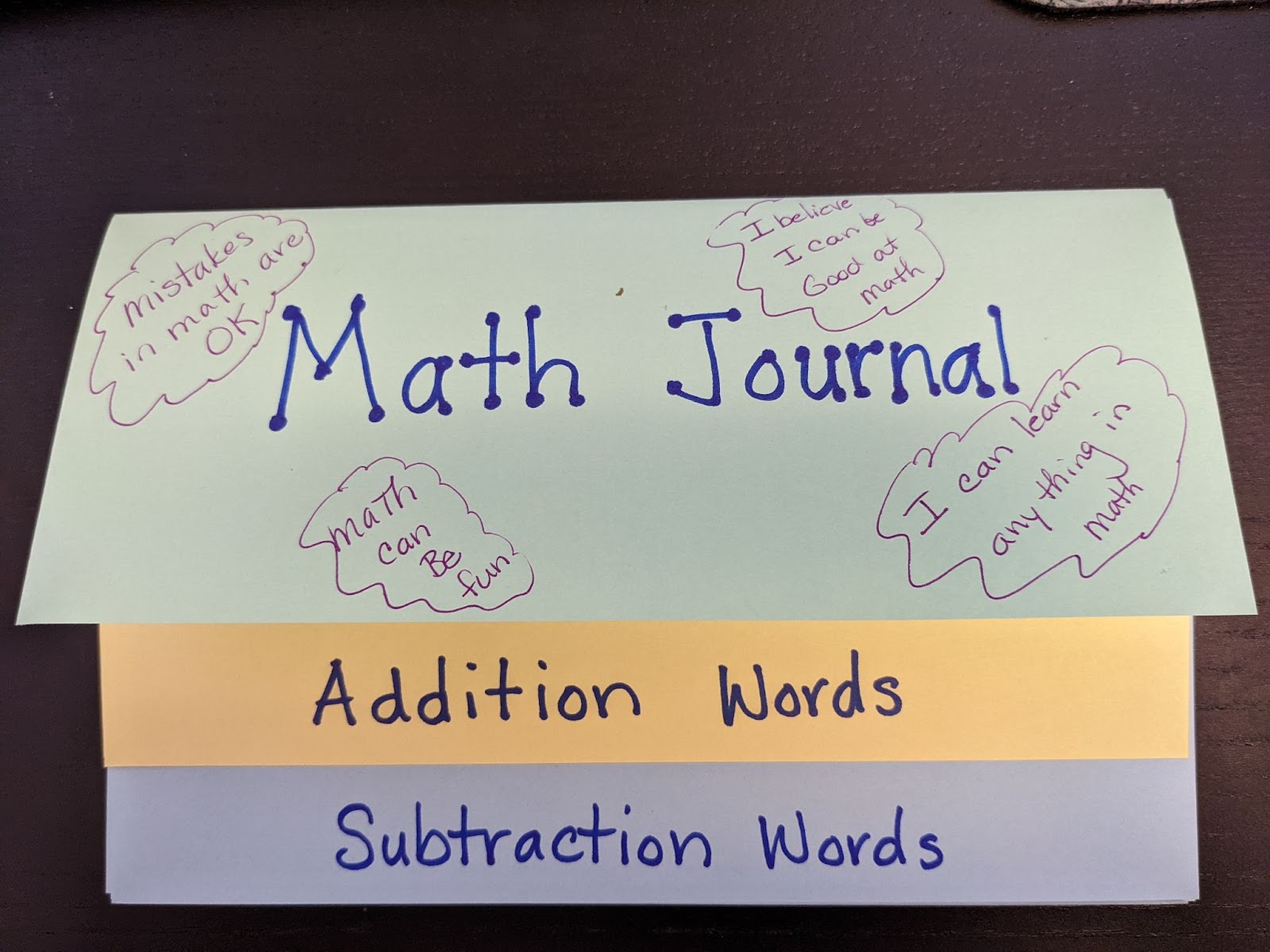
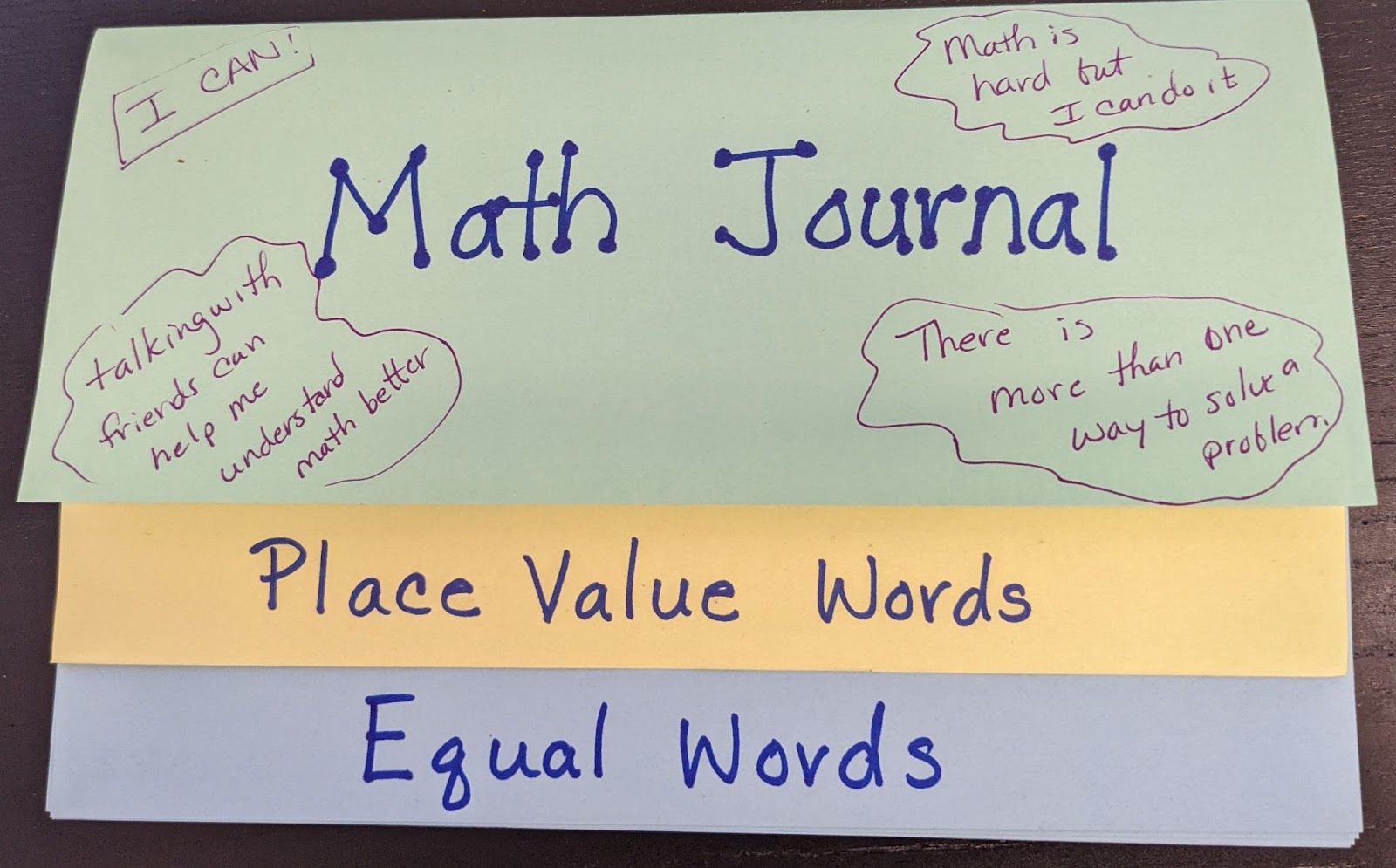
You only need 3 sheets of colored paper.
✅ On the cover, write “Math Journal” or “Math Dictionary.”
✍️ Then let students decorate the front with positive math affirmations like:
📂 On the exposed tabs, label each section:
🧠 Then brainstorm with your class! What words belong in each section?
Addition Words
add, plus, sum, total, increase, more than, altogether, in all, combined, join, put together
Subtraction Words
subtract, minus, difference, take away, less, fewer, how many more, decrease, left, remain, away from
Equal Words
equals, is equal to, is the same as, gives, makes, results in, balances, is
Place Value Words
digit, value, ones, tens, hundreds, thousands, ten thousands, hundred thousands, millions, place value
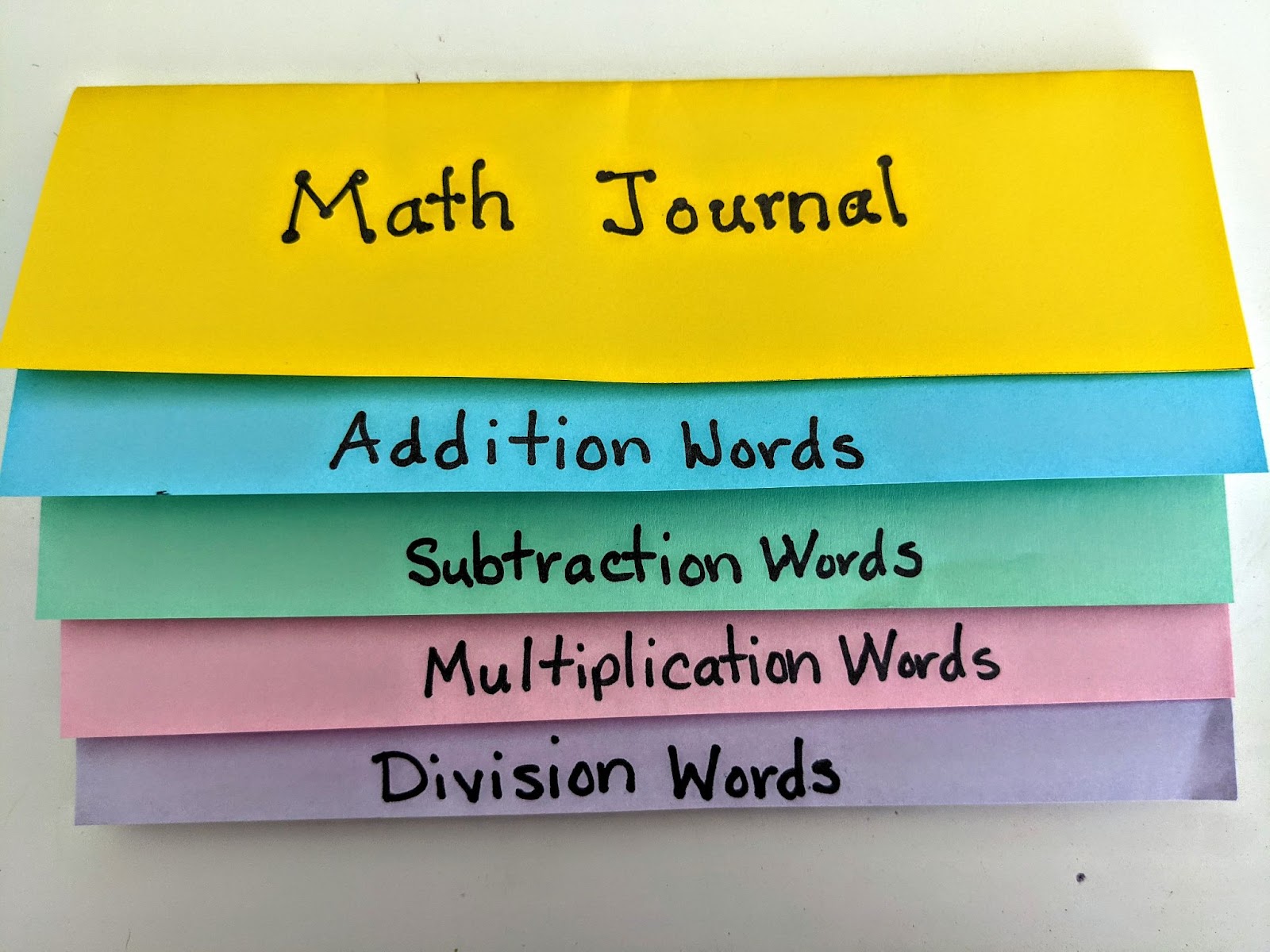
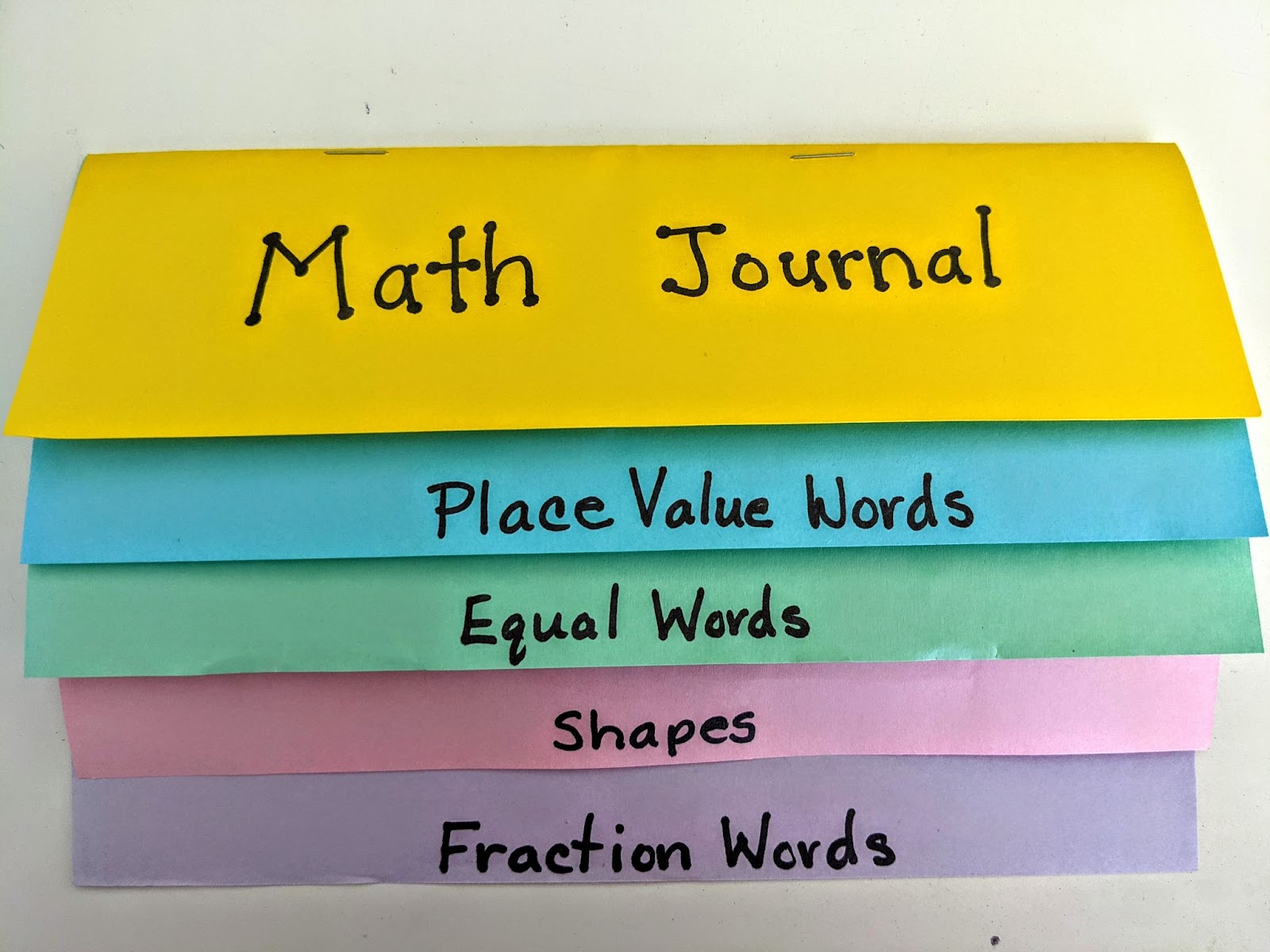
👉 Add 2 more sheets to create 4 extra tabs. Cut each one an inch shorter than the last after folding.
Label the extra tabs:
Multiplication Words
multiply, times, product, groups of, repeated addition, equal groups, each, in all, altogether, array
Division Words
divide, divided by, divided into, each, per, quotient, split, share, equal groups, how many in each, how many groups, out of
Shape Words
circle, triangle, square, rectangle, oval, rhombus, trapezoid, parallelogram, pentagon, hexagon, heptagon, octagon, cube, cone, pyramid, rectangular prism
Fraction Words
fraction, numerator, denominator, equal parts, halves, thirds, fourths, equivalent fractions, simplest form, mixed number, improper fraction
Creating a math dictionary is more than just organizing vocabulary. It’s about empowering students to take ownership of their learning and giving them a tool they’ll actually use.
Give it a try — your students will love it, and so will you!